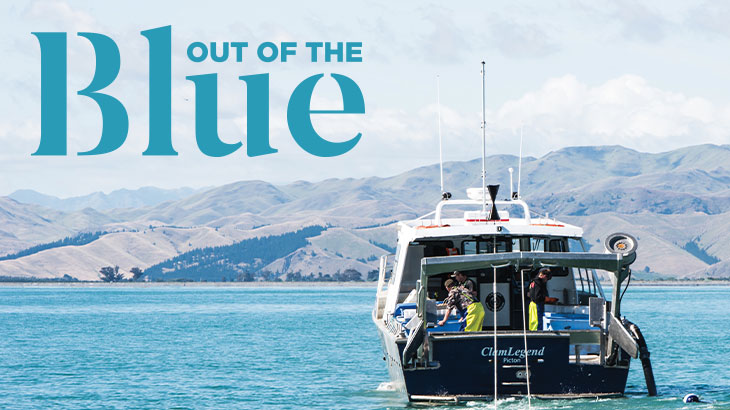Out of the blue
New Zealand’s kaimoana – seafood – is world-class and there are some interesting initiatives underway in this country to bring new kudos to lesser-known species.
According to Seafood New Zealand, approximately 600,000 tonnes of seafood (excluding that produced from aquaculture ventures) is harvested from New Zealand's waters each year.
Our seafood industry plays a key role in the country's economy, contributing around $1.79 billion in export dollars and employing more than 10,000 people.
Sustainability of New Zealand fish stocks is ensured through a world leading Quota Management System (QMS) that controls harvest levels for each fish species and area.
While our wild fisheries are renowned for being abundant, globally, aquaculture – or the controlled farming of seafood – is emerging as the white knight in the production of high-quality protein food sources.
Politically, Cabinet has approved the drafting of a National Environmental Standard for Marine Aquaculture, to create a consistent set of rules for marine farms across the country, while at the top of the South Island, The Nelson Artificial Intelligence Institute is looking at how advanced technology could enhance that region's natural aquaculture advantage.
Our seas, lakes and rivers keep on giving but sustainability and the long-term health of our natural water resources are top-of-mind – whether it’s for wild fisheries or farmed.
Waterfront talks to three players active in New Zealand’s seafood industry.
Clams wide open
Isaac Piper is a second-generation native surf clam harvester and heads up Cloudy Bay Clams based in Marlborough, where he lives with his wife, Kerry, and three children.
“My Dad, Ant, started the business in 1990 and I began working as crew on the boat as a young fella,” he says.
“After a career in dairy farming, I returned to Marlborough 10 years ago to help with the business and I haven’t left.”
Fishing is carried out in three areas – Pegasus Bay in Canterbury, off Foxton Beach in the Horowhenua region, and closer to home at Cloudy Bay in Marlborough.
Cloudy Bay Clams has pioneered the harvesting of the molluscan bivalve surf clams along the coast and its operation is a more-sophisticated version of the low tide foot shuffle that Kiwis have done for generations.
Isaac says all clams came under the highly-regulated Quota Management System (QMS) in 2004. There are eight species of clam under the QMS in New Zealand and Cloudy Bay Clams harvests four of these: diamond clam, tuatua, storm clam and moon shell.
“The old digging into the sand with your toes until you strike a hard shell is a familiar Kiwi pastime but we use boats and purpose-designed hydraulic winnowing hand rakes to scoop up the shellfish from the seabed in the surf zone,” says Isaac.
“This is not a dredge, as the gravelly substrate falls back into the water through the mesh along with juvenile clams, while the larger clams are floated into the basket.
“Most people know clams as the cockles or pipis that you get in estuaries, however the clams we get are in the open water right where the surf breaks at depths of two to eight metres under the sea bed.”
Skippers are highly-trained and navigate the waters with respect for other users, conscious that they are sharing the resource.
Along with complying with QMS requirements, and Ministry for Primary Industries’ monitoring and reporting procedures, Cloudy Bay Clams’ fishery practices are audited by third party Italy-based Friend of the Sea, a globally-recognised and certified sustainable fisheries certification programme.
Further, the company is working proactively with Auckland University of Technology and National Institute of Water and Atmospheric Research (NIWA) with ongoing science projects looking at environmental impact, reproductive capability, and growth rates to ensure that there’s a sustainable clam fishery for generations to come.
While clams are farmed all over the world, New Zealand’s clams come via a wild fishery stock that has a very high reproductive capacity.
“When we look back at records we kept in 2004, there are almost twice as many shellfish in our Marlborough catch area today.
“We’re discerning about where we fish and leave large areas within our catch zone free from harvesting to keep the parent stock up.
“We take our role in the management of this wild fishery very seriously,” he said.
Read more...
[Download PDF guide]